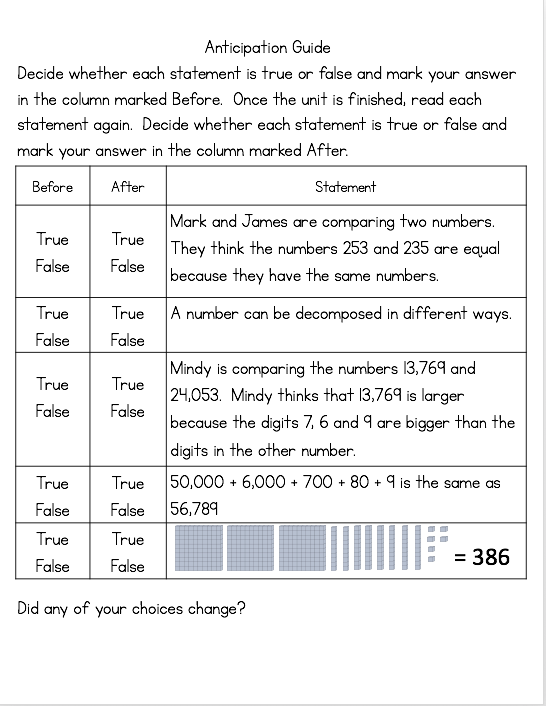This unit is about composing and decomposing numbers. It is important for students to be able to break apart numbers because in the next unit they will be adding and subtraction using place value.
Decomposing and composing numbers requires students to be flexible in their thinking. Students need to explore the place value system so they understand it. How many times do we ask students to perform an operation in a problem and they come up with a number that isn't possible. When asked if the number is reasonable, they have no way to answer. To begin this unit, we ask students to decide whether each statement is true or false. We don't guide or help. We just want to know what their level of understanding is for number concepts.
When the unit is finished, we do this activity again to see if their thinking has changed. Anticipation Guides are a perfect way to explore what students already know! When I write them, I try to use the possible misconceptions that students have about a topic.
TEKS: 3.1A, 3.1B, 3.1C, 3.1D, 3.1E, 3.1F, 3.1G, 3.2A, 3.2B, and 3.2D
Foundations of Number. In this unit, students will learn place value through 100,000. They will compose and decompose numbers with concrete objects, pictorial models and expanded form. They will also compare and order numbers using symbols and words. This unit is scheduled for 8 days.
I have broken down each TEK into Learning Targets to make it easier to track student progress. A student data sheet is included for students to reflect on their own learning for the unit.
Each day contains objective, learning targets, materials, whole class teaching activity, guided math activity and closure with an exit ticket and answer key for most days.
Whole Class teaching in this unit contains:
Anticipation Guide (Preview Assessment)
Math Huddle (Math Talk)
Mini Lessons (Connection, Teaching Point, Active Engagement and Link to Ongoing Learning)
Literature Connection
Games in this unit are included:
Race to 100
SNAP Place Value, Compare and Order


Facebook Comments